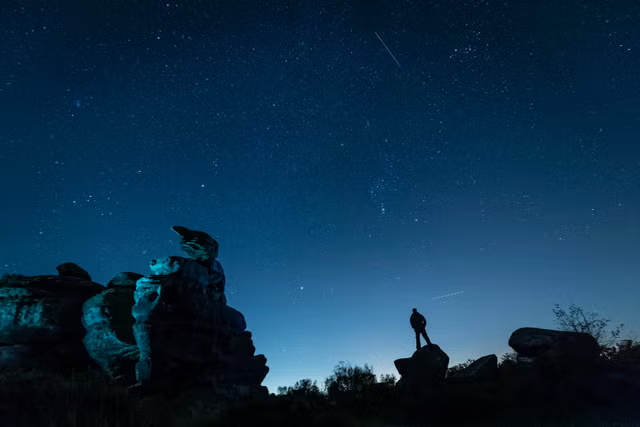Approximately 3.26 billion years ago, a meteorite roughly 200 times larger than the one responsible for the extinction of dinosaurs crashed into Earth. This cataclysmic event, known as the S2 impact, left behind geological evidence that scientists are studying to piece together the story of our planet's early days.
Nadja Drabon, an early-Earth geologist and assistant professor at Harvard's Department of Earth and Planetary Sciences, led a team of researchers in examining rock samples from the Barberton Greenstone Belt in South Africa. Their analysis has provided the most detailed picture yet of the day when a space rock the size of four Mount Everests collided with Earth.
The impact triggered a massive tsunami that mixed ocean waters and swept debris from land into coastal areas. The heat generated by the collision caused the upper layer of the ocean to boil and raised atmospheric temperatures. A thick dust cloud enveloped the planet, temporarily halting photosynthetic activity.
Despite the catastrophic nature of the event, Drabon's research reveals an unexpected twist: Bacterial life demonstrated remarkable resilience, bouncing back rapidly in the aftermath of the impact.
"Early life was resilient in the face of a giant impact that caused a huge tsunami, started boiling the oceans and turned the sky dark," Drabon told Newsweek. "Life not only recovered quickly once conditions returned to normal within a few years to decades, it actually thrived."
The team's analysis of the impact's aftermath showed sharp increases in populations of unicellular organisms that metabolize phosphorus and iron.
The collision likely stirred up iron from the deep ocean into shallow waters, while phosphorus was delivered both by the meteorite itself and through increased weathering and erosion on land. This influx of nutrients created a temporary boom for iron-metabolizing bacteria, offering a crucial glimpse into the nature of early life on Earth.
"Using iron for bacterial metabolism offers a significant energy advantage over many other elements. Hence, once iron became available, it appears, based on our research, that iron-based metabolisms took over," Drabon said.
The study suggests that while meteorite impacts are often associated with mass extinctions, they may have played a vital role in nurturing and diversifying primitive life forms.
The research challenges existing perceptions about the relationship between cosmic impacts and the evolution of life. By directly linking the effects of the impact on the surface environment to changes in early life forms, Drabon's team has opened new avenues for understanding Earth's distant past.
"This is important since Earth back then was frequently struck by giant impacts," Drabon noted. "While we often see impacts as being disastrous—the best example, of course, being the impact that led to the extinction of the dinosaurs—our study shows that the early evolution of life may have in part benefited from these impacts."
The team plans to continue its work in the Barberton Greenstone Belt, which contains evidence of at least eight impact events, including the S2. The team's future research aims to explore how other microbes, such as sulfur-metabolizing organisms, reacted to these ancient impacts.
"We are also looking to see how common these environmental changes are after other impact events early in Earth's history," Drabon said. "Each impact's effect on the environment and life is going to depend on the size of the impact, the type of impactor, the nature of the target rock and the conditions of the environment and life at the time of impact."
Do you have a tip on a science story that Newsweek should be covering? Do you have a question about meteorites? Let us know via science@newsweek.com.
Reference
Drabon, N., Knol, A.H., Lowe, D.R., Bernasconi, S.M., Brenner, A.R., & Mucciarone, D.A. (2024). Effect of a giant meteorite impact on Paleoarchean surface environments and life. PNAS.
Disclaimer: The copyright of this article belongs to the original author. Reposting this article is solely for the purpose of information dissemination and does not constitute any investment advice. If there is any infringement, please contact us immediately. We will make corrections or deletions as necessary. Thank you.



